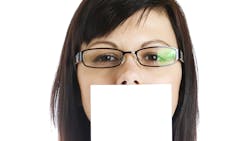Mouth taping for sleep: A TikTok trend with merit
Why are teens, athletes, influencers, and CEOs all putting tape across their mouths to sleep? It’s not a cosmetic glow-up, a pop culture fad, or a political statement; people are taping their mouths to improve sleep and overall health. While some trends on social media are downright ridiculous, this one holds some merit.
Here’s the simple truth: the human nose is designed for breathing, and the mouth is designed for eating. By taping your mouth closed for sleep, you are forced to receive the natural benefits of nasal breathing.
The benefits of nasal breathing
You might already know that inhaling through the nose helps filter the air you breathe. It also helps to humidify the air and allows more oxygen to be delivered to your body, thanks to the production of nitric oxide (NO) in your sinuses. NO is a vasodilator, which means that it causes the blood vessels to widen. This helps decrease blood pressure and increase blood flow, and it’s important for anti-inflammatory action throughout the body.
All these reactions have a huge impact on one’s cognitive and physical performance. In nature, the efficiency of these reactions is necessary for survival. A great example is the cheetah, which can sprint up to 80 mph to catch its prey. Think about it—you’ve never seen a photo of a cheetah running with its mouth open.
Related reading:
- How mouth taping can be key to achieving healthy nasal breathing
- Sleep divorce: How a sleep apnea appliance can save your marriage
Now, consider your own breathing during exercise. You might take quick, short breaths as the intensity increases and you try to take in more air. Unfortunately, it can be counterproductive to your performance. Studies show that people take fewer breaths, have increased oxygen intake, and work out longer before exhaustion when they breathe primarily through their nose.1
Another major benefit of nasal breathing is the direct effect it has on the nervous system. There are two branches in the nervous system. The sympathetic nervous system is responsible for fight-or-flight hormones, while the parasympathetic nervous system helps us rest and digest. The parasympathetic system is activated by nasal breathing, and it ultimately helps one sleep more peacefully.
The disadvantages of mouth breathing
Pulmonologists, sleep specialists, and dentists have long known the trouble with mouth breathing: it often manifests as snoring and can be a sign of obstructive sleep apnea (OSA). OSA is a medical condition in which an individual repeatedly stops breathing throughout sleep due to a restricted or blocked airway.2 It’s no coincidence that some side effects of OSA are similar to those of minimal NO, including fatigue, digestive issues, hormone imbalance, sexual dysfunction, and brain fog.
There is another reason to be cognizant of mouth breathing; it can greatly impact facial structure. There are numerous studies that indicate mouth breathing in children causes their mouth, jaw, and airway to develop in a significantly altered way.3 This may be a concern for esthetics as well as function. Mouth-breathing children can develop crooked noses, narrow mouths and airways, gummy smiles, and have an increased risk of OSA.
Last but not least, mouth breathing often causes bad breath due to the overgrowth of bacteria in a dry mouth. One study indicates more than 30% of people with OSA experience xerostomia, also known as dry mouth.5
With the regular use of face masks in today’s world, many people keep their mouths open under their mask. If you are one of those people, you might notice dry-mouth symptoms that weren’t present before. If you want to start focusing on nasal breathing, start here! Practice actively breathing through your nose with your lips together, even when you are out and about wearing a mask.
Can mouth taping really help?
Intentionally and regularly breathing through the nose during the day can help establish the habit that carries into the night. Mouth taping during sleep can be helpful for some people. It has been shown to be beneficial for those who snore due to mild OSA, because it can potentially reduce collapse of the upper airway.6 Many patients on overnight OSA therapy report that mouth taping helps prevent air leakage from their CPAP machines and/or improve the effectiveness of their oral appliance.
While there are tons of things on TikTok, blogs, and anecdotal evidence about people feeling the benefits of mouth taping specifically for sleep, there have not been many scientific studies on it just yet. It is recommended that you speak to a doctor if you have any medical or breathing condition. You should also talk to your doctor if you cannot breathe through both nostrils due to continuous congestion, a deviated septum, or allergies.
Here are a few tips for a mouth-taping newbie:
Don’ts
- Don’t use tape that is not intended for use on human skin.
- Don’t use an excessive amount of tape or cover your nostrils.
- Don’t use if you’re snoring and haven’t been tested for sleep apnea.
- Don’t use if you have allergies to adhesive materials.
Do’s
- Do try the tape while you’re awake to get used to the sensation.
- Do close your lips lightly and rest your tongue on the roof of your mouth.
- Do consider mouth taping during light exercise.
- Do use with your CPAP or oral appliance for sleep apnea, after consulting with your doctor.
- Do shave the area for easy removal of tape.
To improve your overall quality of sleep and health, keep your eyes open for science-based information. And in this case, keep your mouth shut so your nose can do the work!
Editor’s note: This article first appeared in Through the Loupes newsletter, a publication of the Endeavor Business Media Dental Group. Read more articles and subscribe to Through the Loupes.
References
- Morton AR, King K, Papalia S, Goodman C, Turley KR, Wilmore JH. Comparison of maximal oxygen consumption with oral and nasal breathing. Aust J Sci Med Sport. 1995;27(3):51-55.
- Obstructive sleep apnea. Mayo Clinic. https://www.mayoclinic.org/diseases-conditions/obstructive-sleep-apnea/symptoms-causes/syc-20352090
- Basheer B, Hegde KS, Bhat SS, Umar D, Baroudi K. Influence of mouth breathing on the dentofacial growth of children: a cephalometric study. J Int Oral Health. 2014;6(6):50-55.
- The Breathe Institute. https://www.thebreatheinstitute.com/
- Oksenberg A, Froom P, Melamed S. Dry mouth upon awakening in obstructive sleep apnea. J Sleep Res. 2006;15(3):317-320. doi:10.1111/j.1365-2869.2006.00527.x
- Huang TW, Young TH. Novel porous oral patches for patients with mild obstructive sleep apnea and mouth breathing: a pilot study. Otolaryngol Head Neck Surg. 2015;152(2):369-373. doi:10.1177/0194599814559383
About the Author
Teresa Power DeNike, BS, CCSH
Teresa Power DeNike, BS, CCSH, is the founder of Sleep Better NYC. She has a passion for helping people sleep better through education, sleep coaching, and care coordination. DeNike is board-certified in clinical sleep health with expertise in sleep apnea screening, testing, and treatment, as well as general sleep hygiene and mindset practices. Contact her at [email protected].
Updated January 24, 2023

